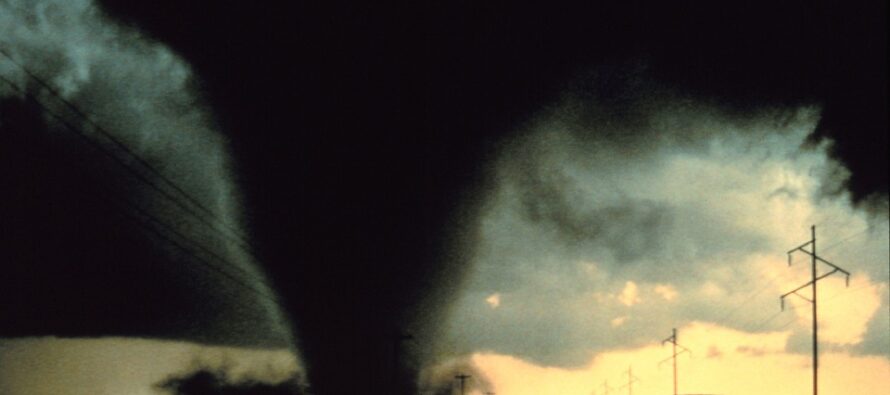When the Disaster Hits

Whether it is natural or man-made, you have to survive the initial event or it is game over. In many cases, however, survival comes down to God’s grace. A tornado may make a direct hit on you, an earthquake could drop the building on you, or an airliner could come down on you. In short, you might just be in the wrong place at the wrong time.
There are ways to put the odds in your favor. An easy way is to know where to run to in the building you work in where it would be safer in during an earthquake or tornado or at the least the closest thing to duck under (desk, etc.). Standing by a large window won’t cut it, but may cut you. Knowing escape routes in case of fire, or other emergencies will also help.
On the harder side is moving to safer areas of the country. With jobs and the economy, this is a luxury few can afford, but it should be considered if possible. No area is immune, but some areas, such as the one I live in, have a less than 10% chance of tornado and earthquake, and zero chance of flooding. There are still other risks, such as the blizzard that hit Tuesday, but they are generally less than most areas. Unfortunately, this area has a very bad economy.
While living and working in a major city area can offer more and better-paying jobs, the costs are usually more, and they stand higher risks of being targets for terrorists, and for urban unrest, riot, and looting, especially if anything disrupts the normal grid for any period of time.
THE 3 OPTIONS
You have now survived whatever the event was. If you have not been scooped up by the authorities, such as police or National Guard, and still have freedom of action you have three basic options from here.
- GET BACK Also called Boogie Back, Bounce Back or Return to Home (RTH) this means to get back home from where you are at, be it work, school, shopping, or in the worst case, on vacation. This is where having a pre-packed bag of some sort will be a life saver.
- GET OUT Also called Get Out of Dodge (GOOD) or a “bug out”, this is where you can’t safely stay where you are. This may have been part of your plan, or have been forced upon you by the situation. You may have to try and get from work to your home to shelter there as planned, or once there, get your gear and head to your safe haven. You may have your GO kits together or may have to go with what you have.
- STAY PUT Also called “hunkering down” or “Sheltering in Place” (SIP), this might mean your home, a safe haven you have gotten to, or the job site, shopping center or school where you are at. In the last case, hopefully, you have some kind of basic items with you.
GET BACK
You are at work and survive when an event hits, but you need to get to your safe haven, whether it is your home or another location.
First, you should have planned a route to get you out of the business area of town and into the countryside as fast as possible, especially avoiding any known bad areas. This may NOT be the route you take to work as highways may be destroyed or blocked. Plan a number of alternate routes.
Second, get out of the area as FAST as you can. Within an hour the “bad folk” are going to come slithering out to loot and rob.
Third, have some basic gear you can grab and go with. A backpack would be nice, but many jobs either forbid such items for security reasons or have a little place to securely stow them. You can keep one in the car trunk, but you can’t count on getting to the car. The alternative is a “lunch bag” kit. Get a good sized, but harmless looking bag with extra pockets on it to carry a “last ditch” kit which would hold various sized, heavy duty ziplock plastic bags or roll up water bags with water purification tablets (water) energy bars (food) a mini flashlight, a disposable lighter, a small pocket knife, , a mini first aid kit, a small cloth carrying bag ( or a foldable backpack), a poncho and a Mylar foil blanket(shelter). You can keep packs of tissues and mints in your desk drawer, and have a Paracord bracelet, a P-38 mini can opener and pepper spray (where legal) on your key ring. Fill you ziplock bags or roll up water bags with water before leaving and put them in your cloth bag to carry.
NOW HIT THE ROAD, JACK AND DON’T LOOK BACK
Visit: EZ Battery Reconditioning To Learn More here: http://www.survivalistdaily.com/ezbatteryreconditioning







Let me tell You a sad story ! There are no comments yet, but You can be first one to comment this article.
Write a comment